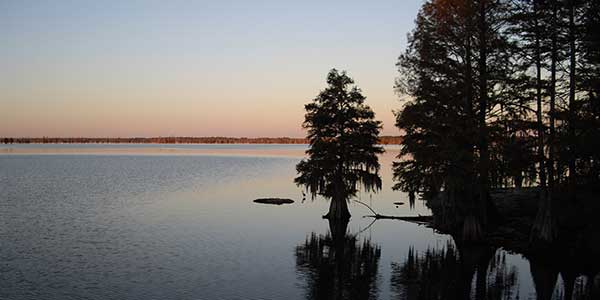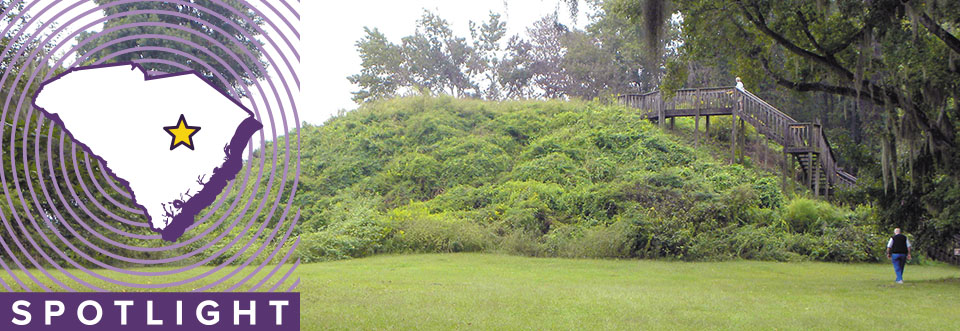Lake Marion
Big bass and deep history lurk in a rich body of water
South Carolina’s largest lake, the vast and fertile Lake Marion spans 110,000 acres and five counties. The lake was conceived in the 1940s as part of President Franklin Delano Roosevelt’s New Deal Rural Electrification project; the Santee River was dammed to provide hydroelectricity to the surrounding areas. Known statewide for its epic fishing opportunities and rich wildlife, the region summons outdoor enthusiasts and budding naturalists regardless of the season. Fringing the lake, Santee State Park and the Santee National Wildlife Refuge offer hiking and biking along myriad trails while public boat ramps allow for on-the-water fun.
Santee State Park
With its dense forests, beaches and swamps braided with scenic trails, the 2,500-acre Santee State Park invites hiking, biking, boating, hunting, wildlife watching and swimming. The park’s longest novice trail (hiking and biking) extends for 7.5-miles and meanders through a mixed pine and hardwood forest draped with Spanish moss and affords signature views of the cypress-fringed lake. From the parking area, the one-mile Sinkhole Pond Trail traverses a varied habitat, including pine forest and swamp, and introduces one of the park’s unique features, a limestone sinkhole pond.
Three short nature trails, ablaze with colorful wildflowers in the spring, provide close encounters with the region’s fauna, including buckeye, papaw, deer, rabbits and snakes. Platforms located near the trails and wetland areas allow for prime time viewing of osprey, great blue herons, painted buntings and other songbirds that converge during summer nesting season. Santee is also a popular spot for swimming and paddling. The park’s beaches also provide boating and fishing access.

Malia Cooler/SCPRT
Santee National Wildlife Refuge
When it comes to biodiversity, the 15,000-acre Santee National Wildlife Refuge packs a punch. Majestic forests of hardwoods and pines interspersed with marsh, wetlands, impoundments and croplands provide sanctuary to many bird, reptile and mammal species. Alligators can be spotted at Alligator Alley.
At Dingle Pond, a one-mile trail with an observation tower and boardwalk provides sanctuary to several wetland species. The Santee Refuge also throws some archaeological interest into the mix. The Santee Indian mound — a burial or temple mound that dates to 1200-1500 A.D. — ranks as the farthest-eastern known manifestation of Mississippian culture.
In the Revolutionary War, the British built Fort Watson atop the mound. In 1781, the fort was taken by Marion’s Brigade. This American unit was led by Francis Marion, nicknamed the Swamp Fox.
Big Fish
Any South Carolina angler will tell you that Lake Marion is the place to be. Synonymous with big fish and abundant wildlife, the lake’s shallow swamps and black water ponds provide fertile ground for many species. Lake Marion is the site of several milestones. The state fishing record for largemouth bass was set here (16.2 pounds) and some of the lake’s other famed catches include a 58-pound channel catfish and a 55-pound striped bass.
Anglers of all persuasions gather at more than 16 boat ramps constructed on the lake and revel in optimum conditions for hooking white perch, crappie, channel catfish, Arkansas blue catfish and bream. If you want to partake, you’ll need to purchase a South Carolina fishing license, which can be obtained in local bait shops and sporting goods stores.
For More Information
Clarendon County Chamber of Commerce
803-435-4405
www.clarendoncounty.com
South Carolina Department of Parks, Recreation and Tourism
803-734-0124
www.discoversouthcarolina.com





